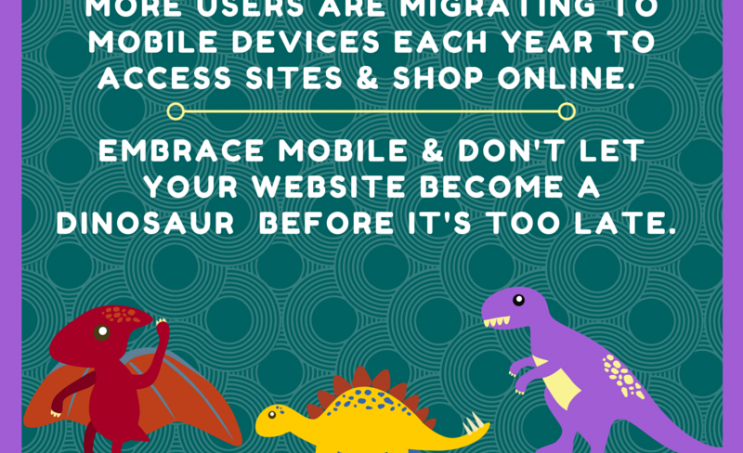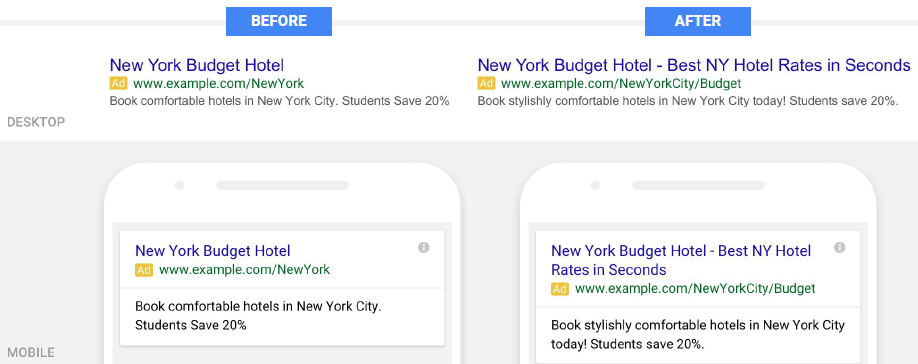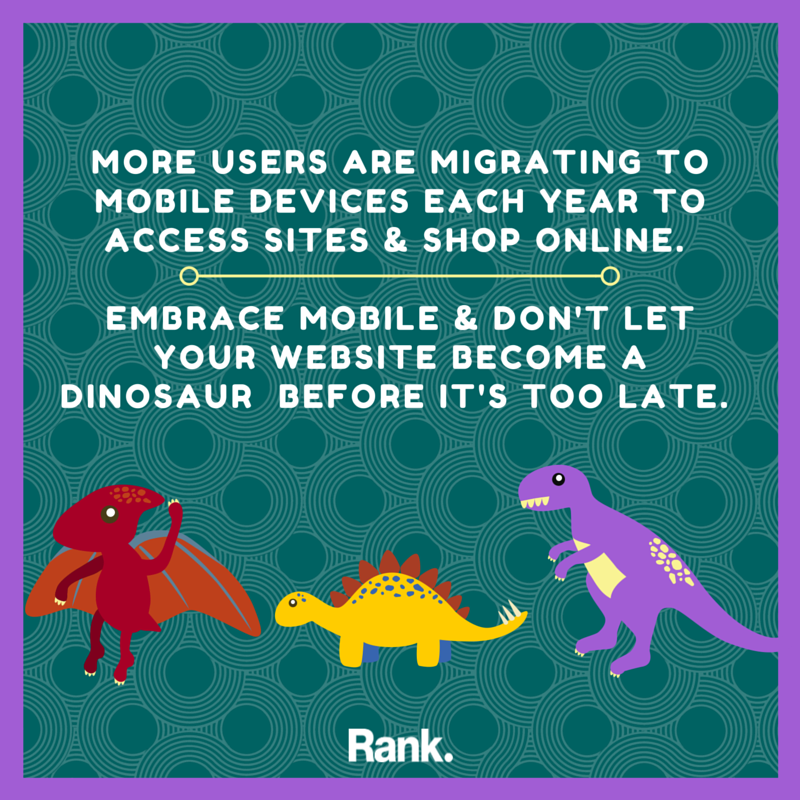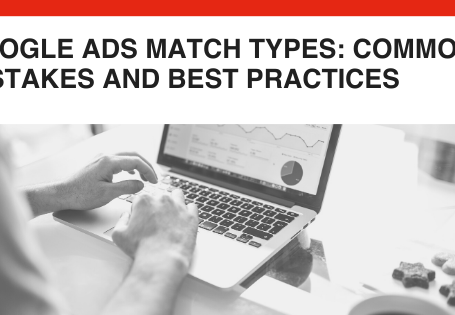Four Major Updates Coming to Google AdWords
By: Rank Media

It looks like Google AdWords is about to become an even better platform for experienced media buyers and novice digital marketers alike. Awww yeah.
Google’s recent Performance Summit gave us a glimpse into the future as the search engine giant unveiled upcoming updates that will refine Google AdWords and make it an even more potent tool for media buyers. While the upcoming updates to the platform’s interface has been necessary for years, yours truly is more excited about the features that will make an otherwise fun activity even more entertaining. Yes, I don’t consider optimizing campaigns on AdWords and other platforms work, but rather a fun hobby that gets even more exciting when my team delivers wins for clients. Now, what about these upcoming updates? Here’s the breakdown:
1. More Text in Ad Headlines & Descriptions
For those of us that have been working within Google’s character count restrictions for years, writing ad copy for Google AdWords has essentially become an art form in the digital space. Whittling down copy into a 25-character headline & two 35-character description lines is a great exercise into pitching new users on your site in a concise and cogent manner. Of course, this has also led to some horribly written ads populating the search universe, and with Google’s “mobile-first” approach, it’s no surprise that they want to feed users more information before clicking on ads. That’s why Google is increasing the amount of text within search ads by replacing the single 25-character headline with two 30-character headlines, as well as replacing the two 35-character description lines with a single 80-character description. Additionally, the new ad format will automatically add the domain from your campaign to the display URL, where you can optimize the path afterwards to synchronize your ads with keywords. The screenshots below from Google give a good idea of how this new update will look like when live:

Why is this significant?
More space = better click-through rates. Why do you think advertisers spend a lot of time optimizing sitelinks, callouts, structured snippets, and other extension provided by Google? Feeding more information into your ads helps give users a sneak peek of what to expect. On a more selfish level, optimized extensions and more ad copy will help your ads occupy more space, which is extremely important for mobile devices. This update is expected to roll out during the summer, so it’s a great time to start getting ready to update your ad copy.
2. Updated Local Search Ads on Google Maps
Years ago, local companies relied upon word-of-mouth and referrals to acquire new business. These days, the evolution of social media, local listings, and search engine marketing have given small business owners a digital arsenal to capture a significant amount of traffic. This is why it comes as no surprise that Google is going to start pushing ads to users on Google Maps this year, allowing brands to potentially generate more local awareness via branded pin markers. These new local search ads will appear on Google.com and Google Maps and contain a wealth of information depending on the business type. For example, retail stores will be able to sync their inventory and display local ad formats for the nearest stores.
Part of the updated integration will also allow businesses to add logos, offers and more to the local ad formats. Most notably, sponsored locations will be given a purple pin marker, allowing advertisers to stick out within Maps. The purple colour for the pin marker is consistent with the purple ad label that has been seen within the local finder in recent months.
Why is this significant?
This is HUGE for local businesses. With new local ad formats, gas stations can theoretically advertise themselves to drivers navigating through active routes. Local bars and restaurants can attract more users by pushing offers via local ads. For retail stores, this provides an ample opportunity to promote physical locations by displaying local inventory. While ecommerce continues to grow and the number of transactions processed online increases, local marketing is seeing a revolution on the digital front as well. As these new features for local marketing continue to get refined within various platforms, small businesses will have cost-effective forms of advertising available to capture more traffic and generate new opportunities.
3. Responsive Display Ad Formats & Expanded Network
There are pros and cons to designing your own creative assets for the display network. Google’s current HTML ads maker is an effective tool for small businesses that don’t have the budget to invest into ads. Of course, they prove to be quite useful when it comes to dynamic product retargeting, but that’s a whole different story. However, it seems like Google is ready to make it easier for advertisers to get onto the display network by launching Responsive Display Ads. All you need to do is give Google a URL, headline, description, and image, and the search giant will do the work for you. Of course, the beauty in this update is that the ads can adapt to any ad format within the Google Display Network.
Additionally, Google has announced that it will give advertisers access to cross-exchange inventory, which means extended reach into more websites and mobile apps.
Why is this significant?
Not only will Google format your ads for all types of sites and sizes, but it will also optimize performance based on where the ads are being served. Advertisers will now have the option to test native ads vs. in-house creatives and gauge performance accordingly. In some cases, this can expedite the launch of display advertising campaigns where you need to push a promotion quickly. This update was a long time coming. The access to cross-exchange inventory is also significant in this regard, as the native display ads will be able to get a broader reach and impact.
4. Improved Device Bidding For Desktop, Mobile & Tablet
Long overdue, Google is finally bringing back control over device bidding within the Google AdWords platform. A while back, the search giant introduced Enhanced Campaigns, which gave advertisers more control over bidding for mobile devices. However, all advertisers could do was adjust bids for mobile devices, which was annoying because you couldn’t do anything about desktop and tablet devices on their own. Luckily, Google’s approach to a mobile-first world will allow advertisers to set bids for all device types: desktop, tablet, and mobile.
Awesome, right? It gets even better:
You have a larger scale for bid adjustments! With the new updates, advertisers can theoretically bump up bids by 900% for any given device, moving beyond the 100% limit we have today. While this may seem ludicrous for relatively high cost-per-click keywords, it makes a lot of sense if you have optimized your campaigns well enough at a low cost-per-click.
Why is this significant?
This give you greater control over your bids on different devices. While call-only campaigns are mobile-only, regular all-features campaigns appear on all devices. If desktop traffic converts much worse than mobile traffic, you’re stuck with keeping bids low in general (desktop & tablet) and bumping up bids for mobile. This ensures that you don’t pay too much for clicks on desktop devices without adversely affecting your performance on other platforms. With the new update, there is now greater control & flexibility over device-specific bidding.
Conclusion – Go Mobile Before it’s too Late & Embrace These Google AdWords Updates

These updates reinforce the notion that being optimized for mobile in 2016 is more important than ever before. Not only have the Mobilegeddon updates over the past year forced businesses to update their websites to rank high organically, Google is now pushing businesses to provide an optimized user experience across all platforms in order to convert traffic via Google AdWords. If you’re website still is not optimized for the incoming flow of mobile traffic, it’s important to update it now before you fall behind the competition. When Google is letting users know that they are implementing a mobile-first mindset, you know it’s time to update your website and campaigns. Don’t become a digital dinosaur.







 (800) 915 7990
(800) 915 7990
